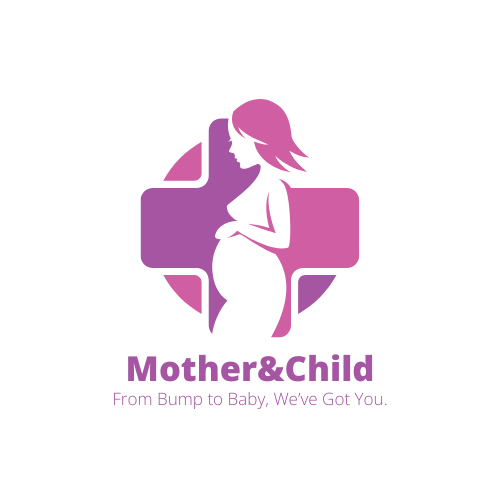
How CHWs Are Fighting Malaria in Young Children: Evidence from Africa and Beyond
- June 23, 2025
- 1 Like
- 72 Views
- 0 Comments
Abstract
Malaria remains one of the leading causes of morbidity and mortality among children under five in sub-Saharan Africa. This paper explores the crucial role of community health workers (CHWs) in combating malaria, particularly among young children. It examines the pathophysiology of malaria, highlights evidence from clinical trials and real-world studies, presents statistics and interventions, and outlines actionable strategies for healthcare systems. The research draws from global and African data, calling for increased investment in CHWs as part of integrated health system strengthening.
Introduction
Malaria remains a major public health challenge, particularly in sub-Saharan Africa, where it disproportionately affects children under five. According to the World Health Organization (WHO), approximately 80% of global malaria deaths in 2022 occurred in this age group, with Africa accounting for 95% of all malaria cases (WHO, 2023). Community health workers (CHWs) are increasingly recognized as vital frontline agents in this fight, providing early diagnosis, treatment, and prevention education within underserved communities.
Pathophysiology of Malaria in Children
Malaria is primarily caused by the Plasmodium parasites, with P. falciparum being the most deadly and prevalent species in Africa. The parasite is transmitted through the bite of infected Anopheles mosquitoes. Upon entering the bloodstream, the parasite invades liver cells, multiplies, and then re-enters the bloodstream to infect red blood cells, leading to symptoms such as fever, chills, and anemia.
In young children, malaria can progress rapidly due to immature immune systems, resulting in severe anemia, cerebral malaria, respiratory distress, and death (Idro et al., 2010). Early intervention is therefore critical.
Role of Community Health Workers (CHWs)
CHWs are laypersons trained to deliver essential healthcare services, often within their own communities. Their responsibilities in malaria care include:
- Rapid Diagnostic Testing (RDTs)
- Intermittent Preventive Treatment in Infants (IPTi)
- Distribution of Insecticide-Treated Nets (ITNs)
- Home-based management of malaria (HMM)
- Referral of severe cases
- Health education and behavior change communication
Studies show that CHWs significantly increase access to prompt malaria treatment, especially in rural and remote areas (Yeboah-Antwi et al., 2010).
Evidence from Clinical Trials and Studies
1. Zambia: Community Case Management Trial
A large-scale study in Zambia found that CHWs trained in integrated community case management (iCCM) reduced malaria-related child mortality by 38% (Yeboah-Antwi et al., 2010).
2. Uganda: CHW-Led Home-Based Management
A trial in Uganda demonstrated that home-based management of fever by CHWs using RDTs and ACTs (Artemisinin-based Combination Therapies) led to faster recovery and reduced malaria prevalence by 30% (Mukanga et al., 2012).
3. Nigeria: Seasonal Malaria Chemoprevention (SMC)
CHWs delivering SMC in northern Nigeria significantly reduced malaria incidence by over 75% in children under five (Issiaka et al., 2020).
- URL: https://malariajournal.biomedcentral.com/articles/10.1186/s12936-020-03419-3
- DOI: 10.1186/s12936-020-03419-3
Statistics: Global and African Burden
- In 2022, 249 million malaria cases were reported globally, with 608,000 deaths.
- 94% of all malaria deaths were in Africa, and 80% of these were children under five (WHO, 2023).
- CHWs are active in over 80% of malaria-endemic African countries (UNICEF, 2022).
- Studies show that where CHWs operate, treatment coverage improves by up to 60% (UNICEF, 2021).
Impact of CHWs on Health Systems
CHWs reduce the burden on formal healthcare facilities by managing uncomplicated malaria at the community level. This decentralization:
- Increases early diagnosis and treatment
- Reduces hospitalization rates
- Improves maternal and child health outcomes
- Enhances community trust in the health system
They also serve as key data collectors, feeding into national surveillance systems and supporting early outbreak detection.
Challenges
Despite their impact, CHWs face barriers such as:
- Lack of remuneration or incentives
- Irregular supply of test kits and medications
- Insufficient supervision and support
- Limited formal recognition within national systems
These challenges must be addressed to sustain and scale CHW-led interventions.
Call to Action
- Governments must formally integrate and compensate CHWs within national health systems.
- NGOs and international donors should invest in continuous training, supervision, and logistic support.
- Digital health tools should be deployed to support CHWs in case tracking and reporting.
- Academic institutions should conduct implementation research on scaling CHW programs.
- Communities must be engaged in selecting and supporting CHWs to enhance ownership and trust.
Resources
- World Health Organization Malaria Reports
https://www.who.int/teams/global-malaria-programme - Malaria Consortium CHW Interventions
https://www.malariaconsortium.org - UNICEF iCCM Digital Hub
https://www.uniceficcm.org - ACTwatch Surveys on Malaria Market and Access
https://www.actwatch.info - Global Health Workforce Alliance (GHWA)
https://www.who.int/workforcealliance
Conclusion
Community health workers are essential to the global fight against malaria in children, particularly in Africa where the burden is highest. They bridge gaps in healthcare access and improve outcomes through timely diagnosis, treatment, and prevention. Investing in CHWs is not just a health intervention—it is a life-saving, equity-enhancing strategy for future generations.
References
Idro, R., Jenkins, N. E., & Newton, C. R. (2010). Pathogenesis, clinical features, and neurological outcome of cerebral malaria. The Lancet Neurology, 4(12), 827–840. https://doi.org/10.1016/S1474-4422(10)70269-6
Mukanga, D., Babirye, R., Peterson, S., Pariyo, G., Ojiambo, G., Tibenderana, J., & Kallander, K. (2012). Can lay community health workers be trained to use diagnostics to distinguish and treat malaria and pneumonia in children? Lessons from rural Uganda. Malaria Journal, 11, 282. https://doi.org/10.1186/1475-2875-11-282
Yeboah-Antwi, K., et al. (2010). Effect of community health worker-based intervention for managing childhood pneumonia and malaria on childhood mortality in Zambia: A cluster-randomised controlled trial. The Lancet, 376(9755), 1270–1278. https://doi.org/10.1016/S0140-6736(10)61430-0
Issiaka, D., et al. (2020). Impact of seasonal malaria chemoprevention intervention delivered by community health workers on malaria incidence in children under 5 in northern Nigeria. Malaria Journal, 19, 354. https://doi.org/10.1186/s12936-020-03419-3
World Health Organization. (2023). World Malaria Report 2023. https://www.who.int/publications/i/item/9789240078945
UNICEF. (2021). The Community Health Worker Programming Guide. https://www.unicef.org/documents/community-health-worker-programming-guide



Leave Your Comment